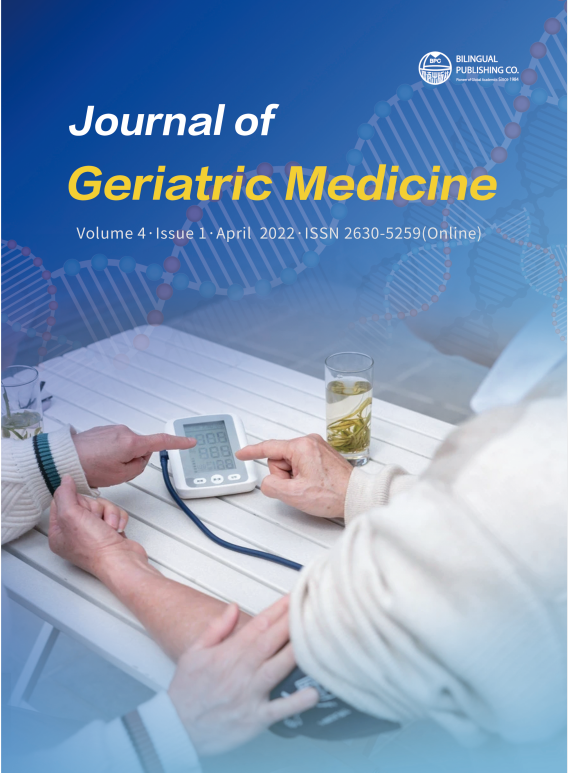 Correction & Withdrawal Policies
Correction & Withdrawal Policies
Fractality of Aging of Living Systems
DOI:
https://doi.org/10.30564/jgm.v4i1.4162Abstract
On the basis of the basic model of the kinetic theory of aging of living systems, mathematical modeling of various characteristics of aging of mankind, state, generation, human body, organs and cells has been carried out. These results are compared with experimental and calculated data of other authors. The analysis of the works presented here and those carried out earlier gave reason to believe that the basic mathematical model of the evolution of aging of living dynamic systems of various hierarchical levels and nature is the invariant differential equation of the kinetic theory of aging, as a manifestation of the fractality property of living systems.Keywords:
Fractality; Aging; Basic model; Kinetic theory; Dynamical systemReferences
[1] Bezruchko, B.P., Koronovskiy, A.A., Trubetskov, D.I., et al., 2010. The path to synergetics. A guided tour in ten lectures. M.: Librokom.
[2] Belokopytov, Yu.N., 2003. Fractal-synergetic image of the nonlinear world. World of psychology: scientific and methodological journal. Russian Academy of Education, Moscow Psychol. - social institute. M. - Voronezh. (4).
[3] Mandelbrot, B.B., 1977. Fractals: form, chance and dimention. San Francisco: W.H. Freeman &Co.
[4] Nicolis, G., Prigogine, I., 2008. Cognition of the Complex. M .: Publishing house LCI / URSS.
[5] Haken, G., 1980. Synergetics. Translated from English / Edited by Doctor of Physical and Mathematical Sciences, prof. Yu.L. Klimontovich and Doctor of Physical and Mathematical Sciences S.M. Osovets. M .: Publishing house “Mir”.
[6] Zhilin, D.M., 2004. Theory of systems. The Experience of Building a Course, Moscow: Librokom.
[7] Viktorov, A.A., Kholodnov, V.A., Gladkikh, V.D., et al., 2013. Mathematical model of the influence of the environment on the aging of living systems. Advances in gerontology. 3(4), 255-260.
[8] Viktorov, A.A., Kholodnov, V.A., 2013. Kinetic theory of aging of living systems. Advances in gerontology. 3(4), 261-267.
[9] Viktorov, A.A., Ksenofontov, A.I., Morozova, E.E., 2014. Environmental risks to public health. Monograph. Moscow: National Research Nuclear University “MEPhI”.
[10] Viktorov, A.A., Gladkikh, V.D., Ksenofontov, A.I., et al., 2015. Forecasting Environmental Health Risks Based on the Kinetic Theory of Aging of Living Systems. Advances in Gerontology. 5(3), 141-146.
[11] Viktorov, A.A., Gladkikh, V.D., Morozova, E.E., 2017. Aging of Dogs and Drosophila as Described Based on the Kinetic Theory. Advances in Gerontology. 7(3), 177-183.
[12] Viktorov, A.A., Kholodnov, V.A., Anofriev, A.V., 2019. Kinetic model of aging of biological species in natural habitat. Advances in gerontology. 9(3), 177- 183.
[13] Modern problems of biokinetics, 1987. Ed. S. D. Varfolomeeva. M .: Publishing house of Moscow University.
[14] Kvasha, A.Ya., Iontseva, V.A., 1995. Modern demography. Tutorial. M .: Publishing house of Moscow University.
[15] Viktorov, A.A., Kholodnov, V.A., 2019. The Predictive Potential of the Kinetic Model of Aging of Living Systems in Demography. Journal of Geriatric Medicine. 1(2), 1-7.
[16] Kholodnov, V.A., Viktorov, А.А., 2020. Timeless, Generational Mathematical Model of the Influence of Age Structure on the Change in the Numerical Composition of living Systems. Gerontology & Geriatric Studies. 6(1), 586-588.
[17] Viktorov, A.A., Zharinov, G.M., Neklasova, N.Yu., et al., 2018. An analytical method for predicting the kinetics of survival of cancer patients with combined radiation therapy. Radiation diagnostics and therapy. St. Petersburg. 2(9), 5-11.
[18] Viktorov, A.A., Alekhnovich, A.V., Gladkikh, V.D., 2018. Prediction of the professional longevity of servicemen based on the kinetic theory of aging. Hospital medicine: science and practice. 1(1), 12-17.
[19] Viktorov, A.A., Zharinov, G.M., Neklasova, N.Y., et al., 2017. Prediction of Life Expectancy in Prostate Cancer Patients Based on the Kinetic Theory of the Aging of Living Systems. Advances in Gerontology. 7(4), 291-296.
[20] Shcherbakova, E.M., 2015. Aging of the World Population. Demoscope Weekly. pp. 667-668. (http://demoskope.ru/weekly/2015/0667/barometer667.pdf)
[21] United Nations Department of Economic and Social Affairs, Population Division, 2015. World Population Aging 2015.ST/ESA/SER.A/368.
[22] National Bureau of Statistics of China: China Statistical yearbook 2011, chapter 3 Population. Stats.gov. cn. Retrieved 2013.
[23] Modern demographic policy: Russia and foreign experience, 2007. Analytical bulletin of the Federation Council of the Federal Assembly of the Russian Federation. (25).
[24] Statistical reference book of the USSR for 1928 (https://istmat.info/node/20228).
[25] Strehler, B., 1964. Time, cells and aging. Moscow: Mir.
[26] Vermeulen, A., 1993. The male climaterium. Ann. Med. 25, 531-534.
[27] Dubinskaya, V.A., 2015. Ontogenesis and modern theories of human aging (literature review). Problems of biological, medical and pharmaceutical chemistry. 10, 26-34.
[28] Dutreix, A., Bengt, E., Bjarngard, N., et al, 1997. Monitor Unit Calculation for High Energy Photon Beams. Physics for Clinical Radiotherapy. Booklet No.3. (Dutch). Paperback.
[29] Anisimov, V.N., 2010. Accelerated aging syndrome under the influence of carcinogenic environmental factors. Russian Physiological Journal named after I.M. Sechenov. 96(8), 817-833.
Downloads
How to Cite
Issue
Article Type
License
Copyright © 2022 Alexander Alexandrovich Victorov

This is an open access article under the Creative Commons Attribution-NonCommercial 4.0 International (CC BY-NC 4.0) License.




 Alexander Alexandrovich Victorov
Alexander Alexandrovich Victorov





